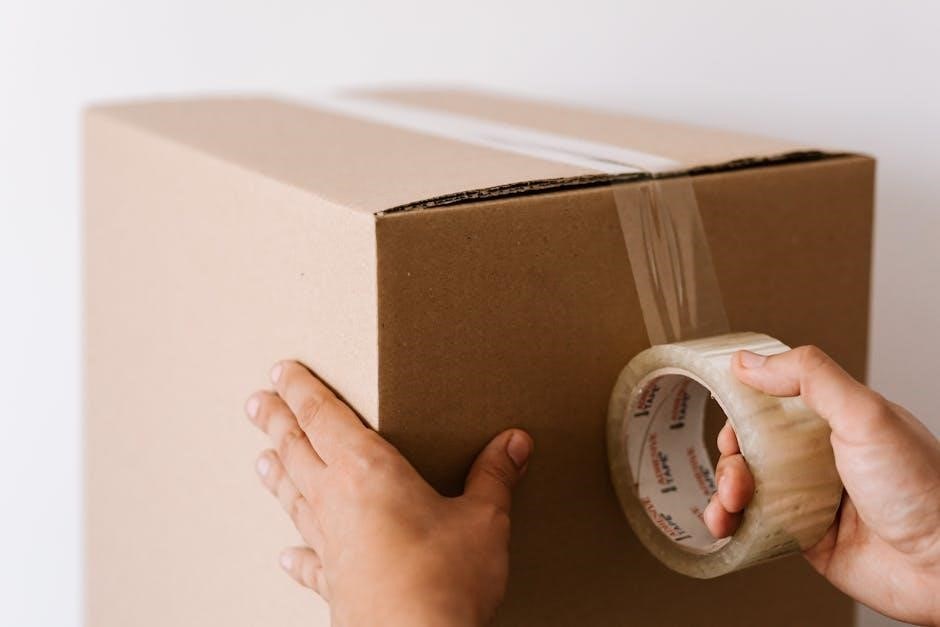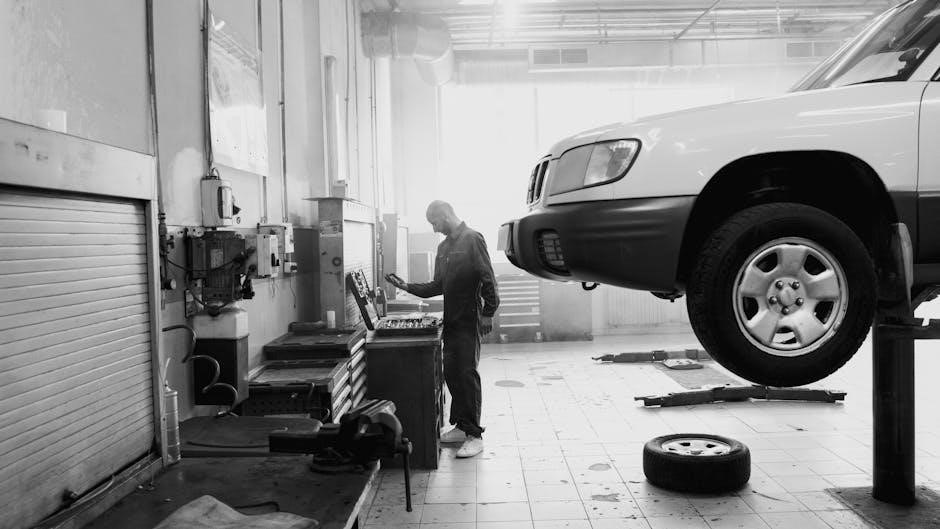This manual is intended for technicians servicing or diagnosing malfunctions in the ZOLL AED Plus. It provides safety warnings and an overview of the manual’s content. It also includes recommended procedures for evaluating the AED Plus unit’s condition and performance, along with troubleshooting steps and error log messages.
Preface: Safety and Manual Overview
This preface serves as an essential introduction to the ZOLL AED Plus Service Manual, providing crucial safety warnings and a comprehensive overview of the manual’s contents. Technicians who service the AED Plus or diagnose malfunctions must thoroughly review this section before undertaking any maintenance or repair procedures.

The manual offers technicians the information they need to perform the tasks. Improper use of the AED Plus can result in injury or even death. It is crucial to fully understand the guidelines outlined in the operators manual. This manual is designed to aid in the understanding of the equipment, and to assist in the troubleshooting, repair, and maintenance of the equipment.
This section highlights the importance of adhering to safety protocols during servicing and troubleshooting, and warns against actions that could lead to personal injury or device damage. Furthermore, the Preface outlines the structure of the manual, guiding technicians through the various chapters and appendices. The operator guide, administrator guide and simulator operator guide can also be referenced. By carefully reviewing this section, technicians can gain a clear understanding of the information provided and ensure they are adequately prepared.
Technical Service Contact Information
For any ZOLL AED Plus unit requiring technical service or assistance, ZOLL Medical Corporation provides multiple channels for contacting their dedicated Technical Service Department. Customers within the United States can reach the department via telephone at 1-800-348-9011. International customers and those outside the U.S.A. can use the number 1-978-421-9655. A fax line is also available at 1-978-421-0010 for sending documents or requests.
When initiating contact, be prepared to provide specific information to the service representative to expedite the process. The department where the equipment is used, along with the name of a contact person, should be readily available. Providing a purchase order number is helpful for tracking loaned equipment or addressing units with expired warranties.
Prior to returning any unit for repair, it is essential to obtain a service request (SR) number from the service representative. This number should be clearly marked on the package when shipping the unit to the ZOLL Technical Service Department. Remember to remove all batteries from the unit before packing it securely in its original container or equivalent packaging.
Maintenance Tests: Procedures for Evaluation
Regular maintenance tests are crucial for ensuring the ZOLL AED Plus remains in optimal working condition, ready for emergency use. These tests involve a series of procedures designed to evaluate both the physical condition and the operational performance of the device. The procedures outlined in this section provide a comprehensive framework for assessing the AED Plus’s readiness.
The maintenance tests encompass several key areas, including a thorough physical inspection to identify any visible damage or wear. This inspection covers the device’s exterior, battery compartment, and electrode connections. Additionally, a preventive maintenance test is performed to assess the AED Plus’s functionality. This test evaluates the device’s ability to deliver appropriate therapy based on simulated cardiac rhythms. It also includes the manual self-test procedure, which provides an internal diagnostic check of the AED Plus’s critical components;
By adhering to these maintenance test procedures, technicians can proactively identify potential issues, ensuring the ZOLL AED Plus delivers reliable and effective treatment when needed. These tests contribute significantly to maintaining the device’s performance and extending its operational lifespan.
Physical Inspection Checklist
A comprehensive physical inspection is the first critical step in evaluating the readiness of the ZOLL AED Plus. This checklist ensures a systematic assessment of the device’s physical condition, identifying any potential issues that could compromise its functionality during an emergency. The inspection should be performed regularly, following the guidelines provided in this section.
The checklist includes examining the exterior housing for cracks, dents, or other signs of damage. The status indicator window must be checked to confirm a green checkmark, indicating readiness. Inspect the battery compartment for corrosion or loose connections. Verify the presence and integrity of the electrodes, ensuring they are within their expiration date and properly connected. The handle should be secure, and all labels must be legible.
Furthermore, inspect any accessories, such as carrying cases or data cables, for damage or wear. Addressing any identified issues promptly is essential. Damaged components should be replaced, and loose connections tightened. This meticulous physical inspection ensures the ZOLL AED Plus is visually sound and mechanically prepared for immediate use.

Preventive Maintenance Test
The Preventive Maintenance Test is a crucial procedure to ensure the ZOLL AED Plus functions optimally. This test goes beyond a simple physical inspection, delving into the device’s operational capabilities to confirm its readiness for deployment in a cardiac emergency. Regular execution of this test is vital for maintaining the device’s reliability and effectiveness.
The test involves simulating various cardiac scenarios to assess the AED’s response. This includes evaluating the device’s ability to analyze rhythms, deliver appropriate shocks, and provide clear prompts to the user. The test also checks the functionality of the device’s internal systems, such as the battery and charging circuits.
During the test, closely monitor the AED’s performance against specified parameters. Verify that the device accurately identifies shockable and non-shockable rhythms. Confirm that the delivered energy levels are within the acceptable range. Ensure that the voice prompts are clear, concise, and easy to understand. Document all test results for future reference;
Manual Self-Test Procedure
The Manual Self-Test Procedure allows you to quickly assess the core functionality of the ZOLL AED Plus. This test, initiated manually, provides a snapshot of the device’s key operational components, ensuring they are functioning within acceptable parameters. Performing this test regularly offers confidence in the AED’s readiness for emergency use.
To initiate the self-test, follow the instructions outlined in this section. The process typically involves pressing a specific sequence of buttons or activating a designated switch; During the test, the AED will perform a series of internal checks, evaluating critical systems such as the battery, circuitry, and software.
Observe the indicators and listen for any audible prompts during the self-test. The AED will typically provide a visual or auditory indication of the test’s outcome. If the test reveals any errors or malfunctions, consult the troubleshooting section of this manual for guidance.
Document the date and results of each self-test for tracking and compliance purposes. Regular self-testing, combined with preventive maintenance, helps maintain the AED’s optimal performance.
Troubleshooting Guide
This section provides guidance for diagnosing and resolving common issues encountered with the ZOLL AED Plus. Before attempting any troubleshooting steps, ensure you have reviewed the safety considerations outlined in this manual. Always prioritize personal safety and follow proper procedures.
The troubleshooting guide is organized by symptom or error message. Identify the specific problem you are experiencing and locate the corresponding entry in this section. Each entry provides a description of the potential cause and a series of steps to attempt in order to resolve the issue.
Begin with the simplest solutions, such as checking the battery level or ensuring proper electrode pad placement. If the problem persists, proceed to more advanced troubleshooting steps, such as inspecting connections or resetting the device. If the troubleshooting steps do not resolve the issue, contact ZOLL Technical Service for further assistance.
This guide also includes information on interpreting error log messages. These messages can provide valuable insights into the nature of the problem and help guide your troubleshooting efforts. Remember to document the steps you have taken and any observations you have made, as this information may be helpful to the technical service team.
AED Plus Error Log Messages

The AED Plus meticulously records system events and potential malfunctions in an internal error log. This log provides valuable diagnostic information when troubleshooting issues. Accessing and interpreting these error messages is crucial for effective service and repair.
Each error message consists of a code and a brief description. This section lists common error messages, their potential causes, and recommended actions. When an error occurs, record the exact error message before attempting any troubleshooting steps. This information will assist technical support in resolving the issue.
Some error messages indicate minor issues that can be resolved by the user, such as low battery or pad connection problems. Other messages indicate more serious malfunctions that require professional service. Do not attempt to repair the AED Plus if an error message suggests a critical system failure.
Refer to the troubleshooting guide for specific instructions related to each error message. The guide will provide step-by-step procedures for diagnosing the cause of the error and resolving the problem. If you are unable to resolve the error, contact ZOLL Technical Service with the error code and a description of the steps you have already taken.
Returning a Unit for Service

If the AED Plus requires repair that you cannot perform on-site, it must be returned to ZOLL Medical Corporation or an authorized service center. Prior to shipping, it is essential to obtain a Service Request (SR) number from ZOLL Technical Service. This number helps track the unit throughout the repair process.
Before packing the AED Plus, remove all batteries. This prevents potential damage during transit and complies with shipping regulations. Securely pack the unit in its original container, if available. If the original packaging is unavailable, use a sturdy box with adequate cushioning to protect the device from damage during shipping.
Clearly mark the package with the assigned SR number. This ensures that the unit is properly identified upon arrival at the service center. Ship the package to the appropriate ZOLL service location, as instructed by the technical service representative. Be sure to include a detailed description of the problem you are experiencing with the unit. This will assist the technicians in diagnosing and repairing the issue efficiently.
Keep a record of the shipping information, including the tracking number. This allows you to monitor the progress of the shipment and confirm its arrival at the service center.
Battery Information and Replacement
The ZOLL AED Plus utilizes specific battery types to ensure optimal performance and reliability. It is crucial to use only the recommended Type 123A lithium manganese dioxide batteries from manufacturers approved by ZOLL. Using non-approved batteries can compromise the AED’s functionality and potentially void the warranty.
When replacing the batteries, always follow the instructions outlined in the AED Plus Operators Guide. Ensure the AED is turned off before beginning the replacement process. Open the battery compartment and remove the old batteries, taking note of their orientation. Install the new batteries in the correct orientation, as indicated by the markings inside the compartment.
After installing the new batteries, the AED will perform a self-test to verify their functionality. If the AED does not power on or displays a battery-related error message, double-check the battery orientation and ensure they are fully seated in the compartment. Replace the battery compartment cover securely.
Proper disposal of used batteries is essential. Do not dispose of them in fire, as they may explode. Contact your local waste management authority for information on appropriate disposal methods for lithium batteries.
Warnings and Safety Considerations
Servicing or disassembling the ZOLL AED Plus should only be performed by qualified personnel who have thoroughly reviewed this service manual and the AED Plus Administrators Guide. Failure to adhere to these guidelines can result in personal injury or damage to the device.
The AED Plus can generate up to 2250 volts, posing a significant electrical shock hazard. Before discharging the defibrillator, always warn everyone nearby to STAND CLEAR. Ensure that no one is touching the patient or the AED during defibrillation.
Only use Type 123A lithium manganese dioxide batteries from ZOLL-recommended manufacturers. Improper battery handling, such as recharging, disassembling, or disposing of batteries in fire, can lead to explosions or other hazards. Always dispose of used batteries properly according to local regulations.
The AED Plus is designed to be resistant to interference from radio frequency emissions; however, it’s essential to assess the device’s performance in your specific operating environment. High-power radio frequency sources may potentially interfere with the AED’s operation.
Strictly follow the instructions and procedures outlined in this service manual to maintain the warranty. Using accessories not manufactured by ZOLL may void the warranty.




Be the first to reply